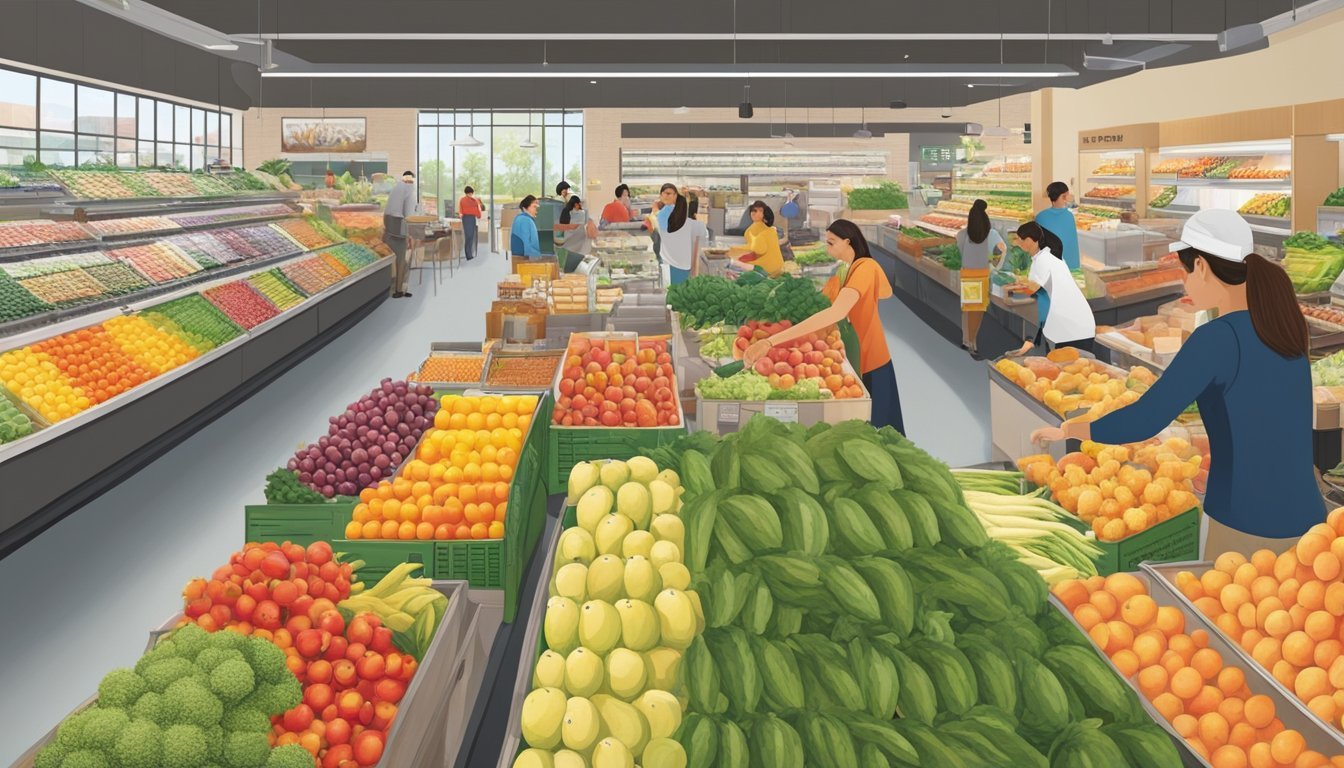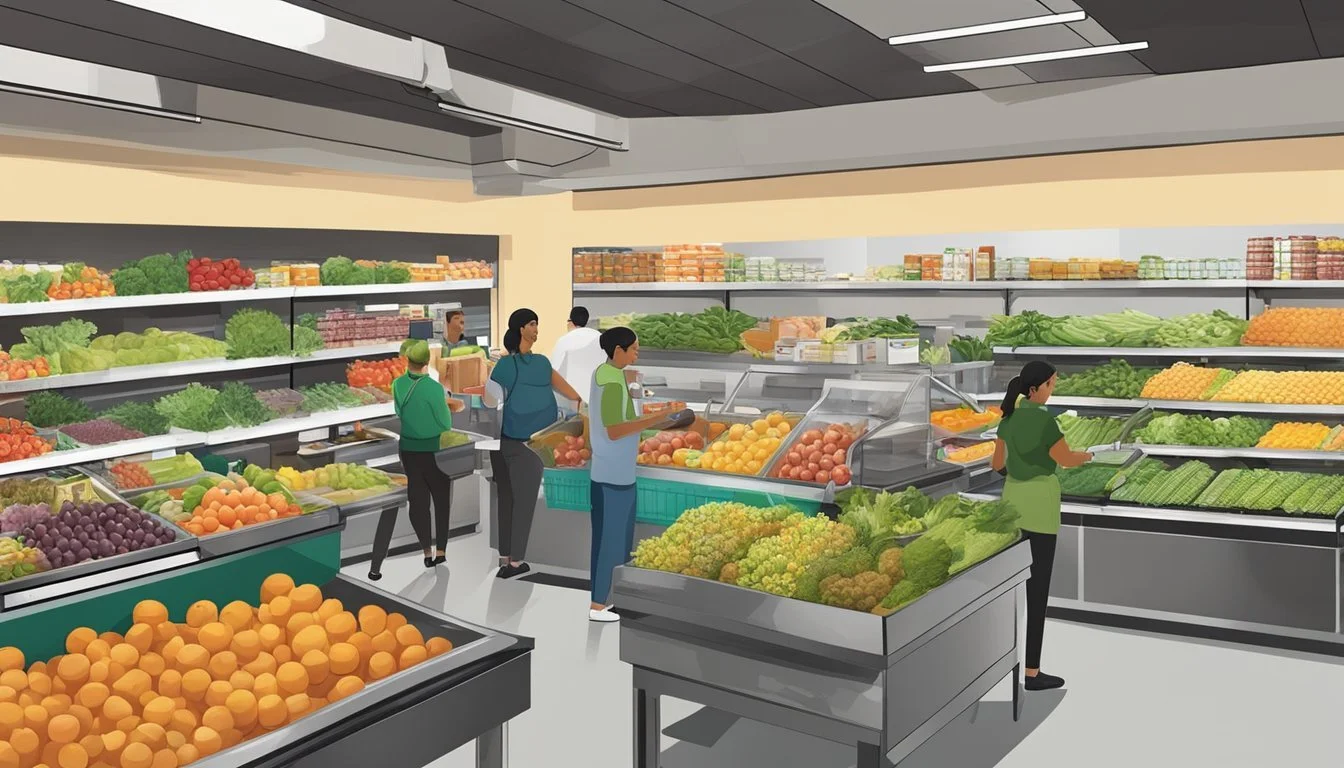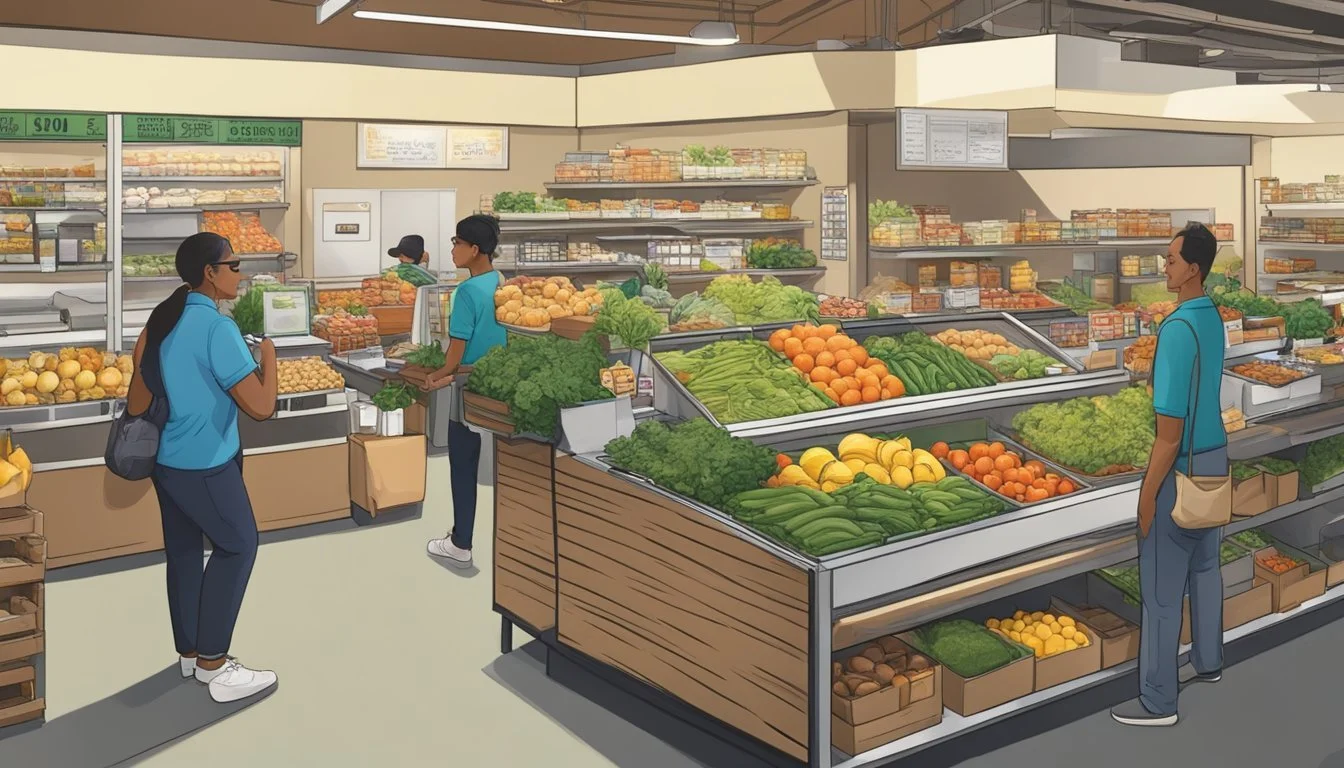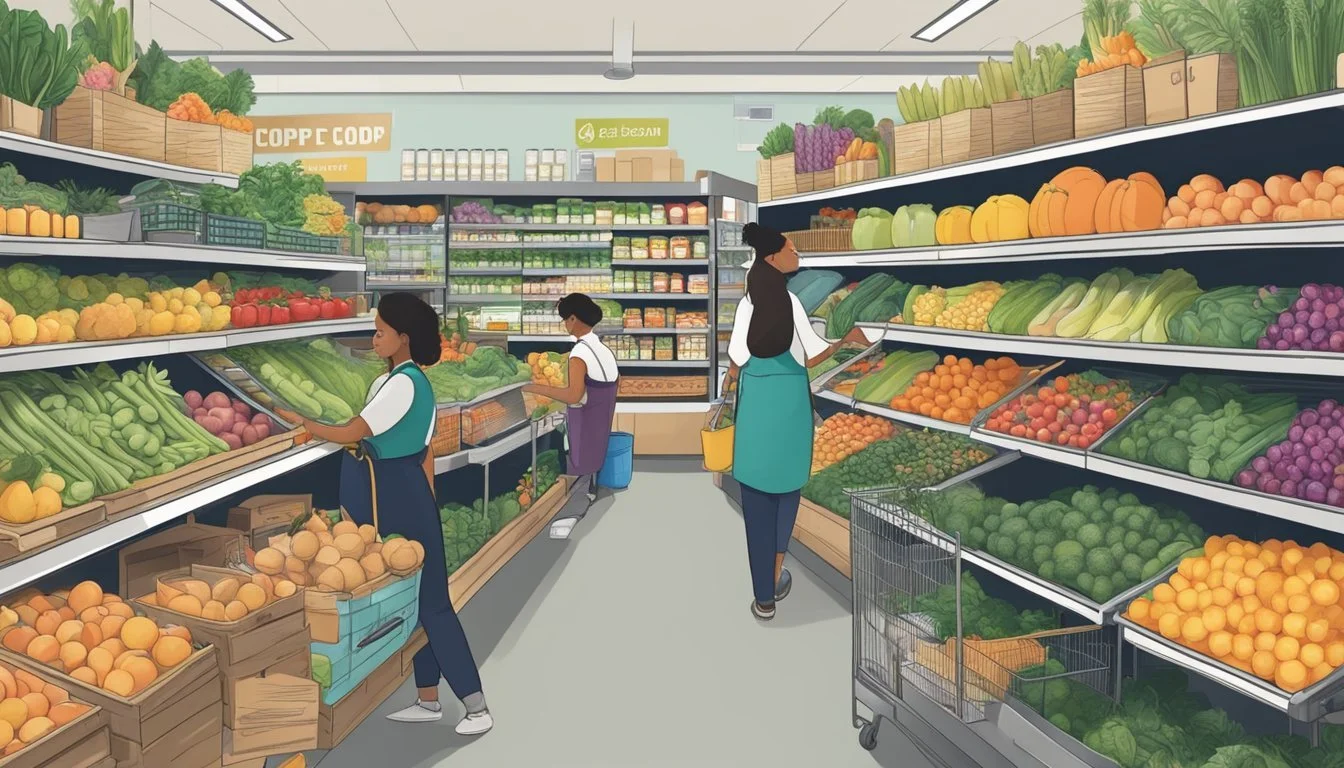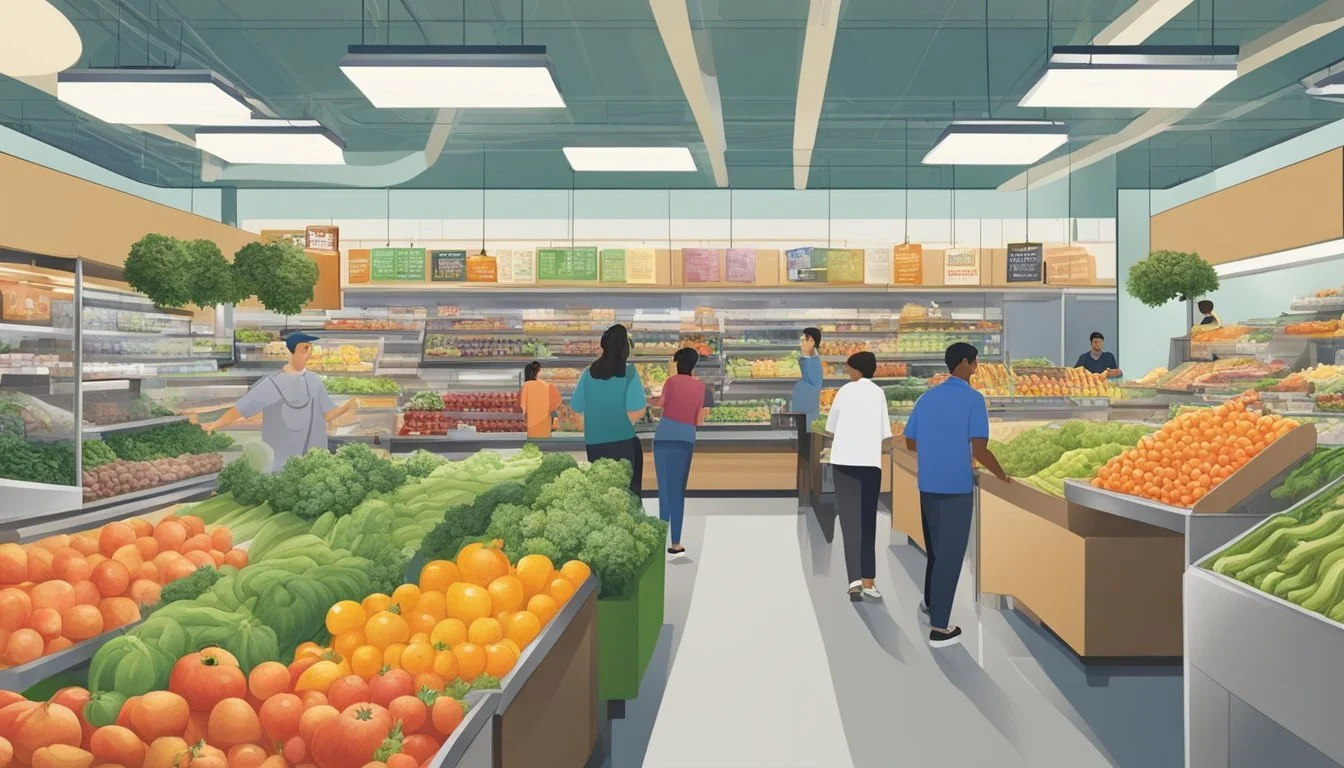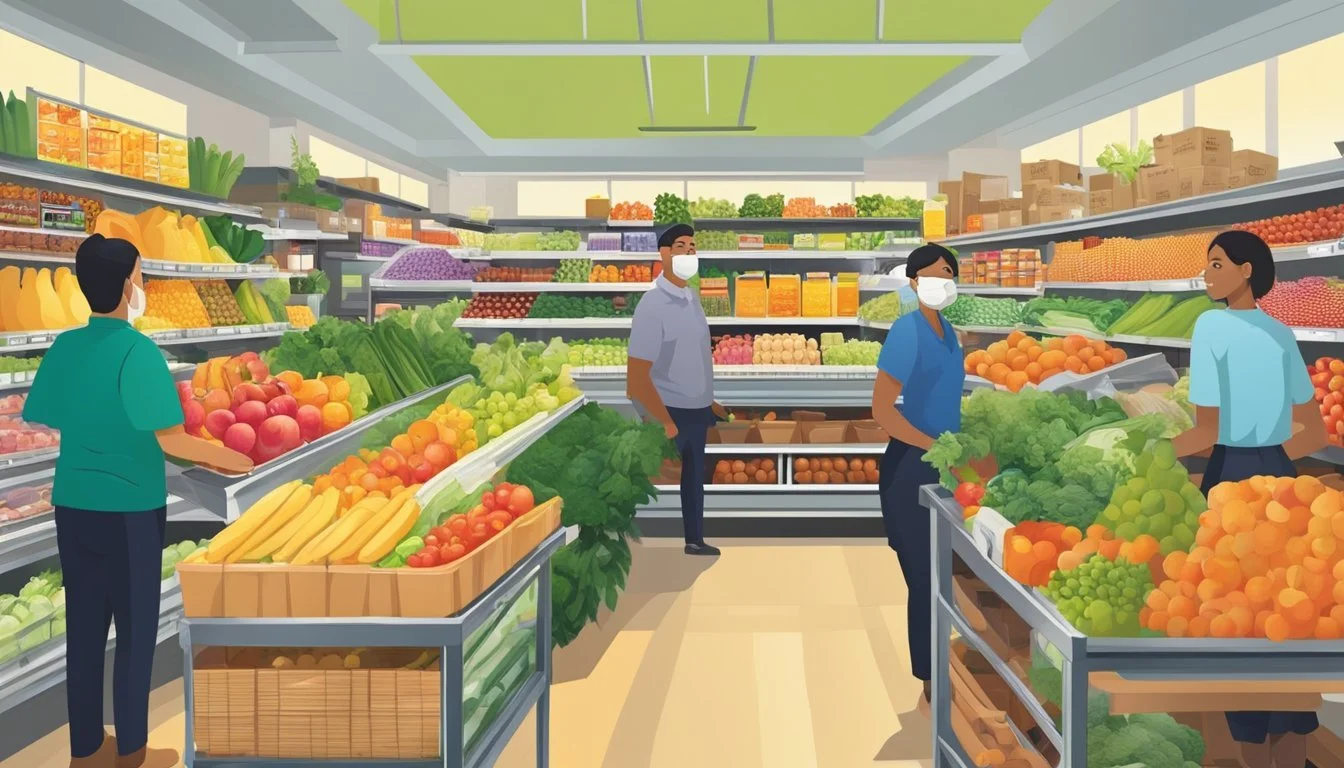Guide to Food Co-Ops in West Covina, CA
Your Local Cooperative Buying Guide
West Covina, nestled in the heart of the San Gabriel Valley, is home to numerous food co-ops and food assistance programs that serve the local community. These co-ops and pantries are critical in bridging the gap for residents who wish to access fresh, locally sourced, and sometimes organic produce. Food co-ops, like the Whittier Community Food Buying Group, prioritize community and sustainability, offering consumers an alternative to traditional grocery shopping.
In West Covina, food security is a pressing concern that local organizations are addressing through various initiatives. For instance, the Elim Community Food Pantry provides free groceries to help those in need, ensuring that all residents have access to adequate nutrition regardless of income levels.
The city also bolsters community support by hosting farmers markets and farm stands. Places like The Farm Store at Kellogg Ranch present opportunities for consumers to purchase fresh, farm-grown produce. Through such channels, West Covina residents are connected to a community-centric food system that not only supplies fresh produce but also fortifies the ties between local consumers and farmers.
Understanding Food Co-Ops
Food cooperatives, or food co-ops, offer a community-oriented alternative to traditional grocery stores, where members often have a say in the operations and derive benefits from its success.
What Is a Food Co-Op?
A food co-op is a collectively owned grocery store operated for the benefit of its members. Unlike conventional retail models, co-ops are driven by principles of community empowerment, shared ownership, and equitable access to high-quality food. Members typically buy shares in the co-op, providing capital to help run the operation.
History of Food Cooperatives
Food co-ops in the United States date back to the early 20th century, evolving from grassroots movements to address food insecurities and the desire for wholesome foods. They gained popularity as community members recognized the value of collaborating to provide access to affordable, quality food outside of the traditional for-profit grocery sector.
The Role of Members
Members are at the core of a co-op’s success. They contribute not just with financial investment through purchasing shares, but also often participate in the governance of the organization. Members may also receive benefits such as discounts on products and a voice in co-op policies. Their commitment helps ensure the co-op aligns with the community's needs and values.
Benefits of Joining a Food Co-Op
Joining a food cooperative in West Covina, CA, offers numerous advantages, from enhancing local agriculture to providing members with high-quality grocery options, all while fostering a sense of community and shared ownership.
Supporting Local Agriculture
Local farmers benefit significantly when consumers choose to shop at food co-ops. These establishments prioritize purchasing from nearby farms, which can lead to a more sustainable community by supporting the local economy and reducing environmental impacts associated with transportation. Shopping at a food co-op means a consumer is directly investing in the success and resilience of the local agricultural sector.
Access to Quality Products
Food co-ops distinguish themselves by quality products. They often feature organic, non-GMO, and artisanal items that may not be available at conventional grocery stores. For member-owners, this translates to access to fresh, locally grown food, which is often harvested at its peak and delivered swiftly to the co-op, ensuring optimal taste and nutritional value.
Community and Ownership
Being part of a food co-op goes beyond the exchange of goods; it's about being part of a community. The cooperative model revolves around member-owners who have a say in business decisions and operational aspects of the store. This ownership model not only fosters a democratic approach to groceries but also reinforces the ties between the co-op, its members, and the wider West Covina area, strengthening communal bonds.
How Food Co-Ops Operate
Food co-ops in West Covina, akin to those elsewhere, are distinguished by their ownership structure and participatory decision-making process. They balance their business operations with member-focused principles and community investment.
Member Ownership and Decision Making
In a food co-op, the term owned refers to the collective proprietorship by the members, who are typically consumers or a combination of consumers and workers. These members invest in the co-op to gain a stake in the business and share in decision making. Voting rights in key business choices, including electing a board of directors, are an essential aspect of membership.
Management Structure
At the helm of food co-ops, a management team led by a manager or CEO oversees daily operations, but ultimate oversight lies with the democratically-elected board of directors. This board, generally comprising members, sets broader policies and ensures the co-op adheres to its values. In certain cases, the co-op is worker-owned, leading to a share in decision-making between the workers and consumer members.
Economic Principles and Practices
West Covina's food co-ops embrace economic practices that are aligned with their dual role as a business and a nonprofit entity. They reinvest profits back into the co-op or the community, supporting local labor and suppliers. Operational efficiencies are sought after, consistent with the ethos of maximizing value for their members rather than prioritizing external investment returns.
Food Co-Ops in West Covina, CA
West Covina, a vibrant city in California, is home to unique food co-ops that exemplify commitment to community involvement and local sustainability. Among these, The Farm Store at Kellogg Ranch stands out as a beacon of local produce and community-focused services.
The Farm Store at Kellogg Ranch
Strategically located near Pomona, within the vicinity of West Covina, The Farm Store at Kellogg Ranch is a model for local food co-ops. Operated by Cal Poly Pomona (CPP), it features an array of CPP grown products. Visitors can purchase fresh produce directly from the fields and greenhouses of Kellogg Ranch, showcasing the direct line from farm to table.
Local Supporting Services
Services offered by food co-ops in West Covina extend beyond just food retail. They often encompass educational programs on agriculture and nutrition. Additionally, they may provide spaces for local artisans to sell their goods, thereby fostering an environment that supports the local economy.
Community Involvement
Community involvement is quintessential to food co-ops in the area. They serve as hubs where local communities can engage in the food system, participate in events, and contribute to a sustainable lifestyle. By prioritizing locally-sourced inventory, co-ops like The Farm Store empower residents to make food choices that benefit the environment and bolster the community's economy.
Sourcing and Distribution
The sourcing and distribution initiatives in West Covina food co-ops focus on establishing robust connections with local farmers to provide community members with access to fresh, organic, and sustainably grown products.
Local and Organic Food
In West Covina, food co-ops prioritize the procurement of locally grown and organic food. These co-ops support environmentally-friendly agricultural practices by sourcing from producers who adhere to organic farming principles. This not only ensures that the products are free from synthetic pesticides and fertilizers but also strengthens the local food system and reduces the environmental impact of transportation.
Sources:
Local family farms
Community-supported agriculture (CSAs)
Farmers markets
Relationship with Local Farmers
Food co-ops in West Covina build mutually beneficial relationships with local farmers. These partnerships are crucial in sustaining a steady supply chain for the co-ops while also providing farmers with a reliable outlet for their products. By collaborating closely, co-ops help stabilize the local agricultural economy and encourage the continuation of environmentally-friendly farming methods.
Partnership Aims:
Economic stability for local farmers
Commitment to sustainability
Community outreach and education
Distribution Networks
The distribution networks of West Covina food co-ops are designed to efficiently deliver fresh produce and other goods to their members. Distribution often includes innovative methods such as community pick-up points and cooperative buying programs. By optimizing distribution channels, co-ops ensure that the shortest path from farm to table is achieved, maintaining product freshness and minimizing the carbon footprint.
Distribution Methods:
Drive-through distribution points
Community food buying groups
Walk-up service options
Through a focus on sourcing locally and engaging with dedicated farmers, West Covina's food co-ops exemplify a sustainable approach to distribution that benefits both the consumer and the environment.
Financial Aspects
Food cooperatives in West Covina, CA, not only provide nutritional options for households but also have a unique financial structure that impacts the local economy and benefits their members.
Economic Impact on Local Economy
Food co-ops often source products from local producers, thereby investing money back into the local economy. They support small businesses and may offer inclusive trade programs that promote diversity and economic growth within the community. The presence of a food co-op can stimulate local agriculture and may lead to increased employment opportunities. By keeping money in the community, cooperatives contribute to a more robust local economy.
Financial Benefits for Members
Members of food cooperatives typically benefit financially through mechanisms such as patronage dividends and quantity discounts. Patronage dividends are profits returned to members based on their purchases, directly linking their income to their involvement with the co-op. Members can also enjoy the benefits of bulk purchasing, which translates to lower prices. Additionally, investing skills and energy into the co-op can yield considerable nonprofit benefits, including access to higher nutrition food options at reduced costs. Membership can effectively reduce a household's overall food expenditure while boosting its nutrition and wellbeing.
Challenges and Considerations
The operation of food co-ops in West Covina, CA, presents unique challenges and considerations that affect their sustainability and growth. These must be navigated thoughtfully to ensure long-term success.
Competing with Traditional Grocery Stores
Food co-ops often compete with traditional grocery stores, which possess advantages in terms of purchasing power and convenience. Grocery stores often have extensive networks and resources, allowing them to offer a broader range of products at lower prices. Food co-ops must find effective strategies to attract and retain customers, such as emphasizing their local and ethical sourcing, to remain viable.
Maintaining Product Diversity and Availability
A primary concern for food co-ops is ensuring a consistent supply of diverse products. With a focus on locally sourced and organic groceries, these co-ops must work closely with small-scale producers to maintain stock. Unexpected shortages or the inability to source particular products can result in limited variety on the shelves, which can deter customers accustomed to the extensive offerings of larger retailers.
Environmental Considerations
Food co-ops often prioritize environmental sustainability and face the challenge of balancing this with operational demands. Prioritizing sustainability involves:
Sourcing from local producers to reduce carbon footprint
Offering organic groceries to support environmentally conscious practices
Minimizing waste through biodegradable packaging and bulk sales
Each of these practices requires careful coordination and can be more costly than traditional methods. An organization must weigh these costs against their commitment to environmental stewardship and the willingness of their customer base to support these values financially.
Additional Resources and Partnerships
West Covina food co-ops provide a plethora of additional resources and partnerships that extend the value they offer to the local community. They are not only hubs for buying local produce but also centers for education, sharing of resources, and contributing to a sustainable environment.
Educational Opportunities
Nutrition Workshops: Co-ops often host workshops led by nutritionists to educate community members on healthy eating habits. By collaborating with local health professionals, these co-ops provide critical skills that help individuals make informed dietary choices.
Cooperative Business Seminars: Regularly scheduled seminars on cooperative business models equip local residents with the knowledge to understand the intricacies of running a cooperative. This includes how to maintain a controlled supply chain that benefits both small farmers and consumers.
Local Collaborations
Partnerships with Small Farmers: Food co-ops work closely with small farmers, fostering a mutually beneficial relationship. By sourcing directly from these farmers, co-ops help reduce environmental impact and support the local economy.
Community Engagement: Co-ops thrive through community involvement. By creating partnerships with schools and community centers, they engage members in cooperative activities and working together to serve the wider community needs.
External Food Co-Op Networks
National Co-op Grocers (NCG): By participating in broader networks such as NCG, local food co-ops gain access to a wider range of supplies, allowing for more diverse inventory and competitive pricing.
Cooperative Alliances: Aligning with external food co-op networks enables the sharing of best practices in sustainability and resource management, showcasing the strength of partnerships that extend beyond city limits.
Future of Food Co-Ops
The future of food co-ops in West Covina, CA, and beyond is shaping up through adaptation to emerging business trends, innovations, and dedicated community leadership—vital elements fostering growth and sustainability.
Trends in Cooperative Business
The cooperative business model is experiencing a resurgence with a growing preference for local and sustainable sources of food. Food co-ops have positioned themselves as instrumental players in promoting food sovereignty and reinforcing local economies. With an increase in consumer awareness, food co-ops in West Covina are anticipated to witness a rise in membership as the community leans towards ethical consumption and a stronger local food system.
Innovation and Growth Strategies
Innovation is key to the expansion of food co-ops. Creative approaches to supply chain management, membership engagement, and the incorporation of technology will drive growth. Food co-ops are exploring online platforms for improved member interactions and expanding their reach. Collaborative efforts, such as partnerships with initiatives like the National Black Food & Justice Alliance mentioned in the search snippets, indicate a strategy for inclusive growth that honors diversity and broadens community impact.
Advocacy and Community Leadership
Food co-ops often lead by example in community development and food justice advocacy. By partnering with organizations that promote resilience and empowerment in food access, food co-ops like those in West Covina become beacons of community leadership. The educational initiatives and empowerment strategies that they bring to West Covina foster a culture of lifelong resilience and self-sufficiency, ensuring that food co-ops remain integral to the community's fabric in the future.

